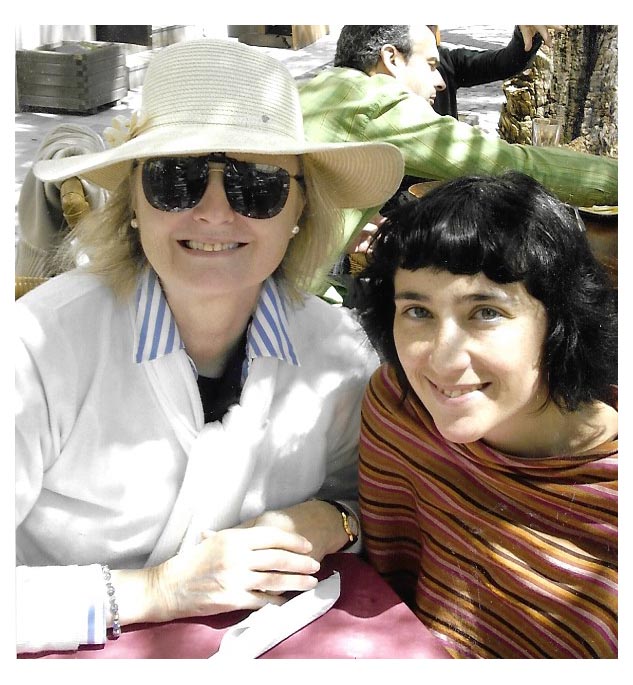

From AD 711 until 1492, Iberia was in Islamic hands. There was a peaceful intermingling of Muslim, Christian, and Jew under the tolerant caliphs. This was the tenth-century Cordoba. Power and wealth created a civilization of affluence.
The Alhambra shows the glories of Cordoba when it was Christian ruled. It remains a fortress both stark and grim. Embraced by austere walls, buildings and gardens show both a miracle of grace and fancy. Inside, the builders used their imagination to create a delicate cluster of soap bubbles. An intricate design in carved and painted wood, the ceiling of the Hall of the Blessing is typical of its rich embellishments.
The interior is a fairyland, with evanescent vistas of sky and water, soaring arches and halls, whose rampant décor ranges from floral to abstract and includes a running rubric of Arabic epigraphy.

And so I flew to visit my Spanish exchange student Pilar in Granada. Her apartment had a roof deck where we went to play the card game Canasta with her boyfriend, Gerardo.
It was magic.
I looked straight ahead and saw the Cathedral of Granada. I looked left and saw the full moon. I looked to my further left and there was the Alhambra. In my mind’s eyes, I can still see that scene. What a night!
As a million stars twinkled in its Spanish night.
Pilar and I walked throughout its verdant plain in the torrid heat the following day.. The Alhambra is the last bastion of the eight-hundred year Islamic presence in Spain. Then we had lunch al fresco at a charming café. We walked through the open-air markets selling all manner of spices and nuts and scarves and this and that. Beggars approached, but Pilar said to ignore them.
Just as the desert glows in moonlight or at dawn, the changing light of day gives the walls of the Alhambra shades of red. The redness comes from bricks made from a ferrous mud. In 1238 the first Nasrid ruler began to build his fortress palace, the walls of the riding edifice glowed crimson in the light of all the torches. Its name, “The Red Citadel” was fixed forever and remains today.
The Alhambra sits on a natural acropolis. On the northern side there is a sheer fall of rock to the Darro River. This gorge was an impregnable defense. The southern side was guarded at entrances in its massive walls.
When the day arrived that I was leaving for Portugal, Pilar fixed me a box lunch and we said goodbye until we meet again. Since there were no flights from Granada to Lisbon, I had to book a midnight bus! It was murder. I sat in a deserted bus station thinking I could meet my Maker there, but luck held out and nothing untoward happened.
Seville and Lisbon were delightful. I especially enjoyed the open air markets there and the main boulevard walking back to my hotel. Then it would be time to fly back to Madrid and then home to the USA.
Wonderful memories.

